TCMontium
Member
My English is not fluent so I may use wrong words or I may have misunderstood some things I read.
I had a female Jackson's at last autumn. I named her Xantastasia. She was an adult and I bought her right after she was imported from Europe. She lived like 5-6 weeks without a single problem, like an ordinary chameleon. Than one day, I found her acting VERY WEIRD just after seeing her normal 20-30 minutes ago?! She was doing some weird moves which I can not remember right now, but I remember well that I picked her up quickly and she did roll and bend his body, arms and legs like crazy for a short while.
Then she stopped. She was like exhausted and was not able to grab something or stand on her feet. Maybe she was not even moving her eyes, I do not remember every detail. Then I watched her die slowly in my hands, her tongue went out of her mouth and she died seconds or minutes after that...
Then I did a "surgery" to find what the cause of that sudden death was. I suspected that she ate something dangerous, but there was nothing dangerous for her to eat in cage and I found nothing in her mouth, throat or stomach. Actually, as soon as I see her opened up, I saw something unusual (to me). Her liver was filled with lots of little white balls... That was the only thing I could consider "not normal" about her but I am not a reptile expert, so I was not sure.
Her death was not explainable until today. I am still not sure, but I just discovered that there is a fungus named Chamaeleomyces granulomatis. Yet I did not read about it accept its name, its hosts (which are some species of chameleons as much as I understood) and its appearance... It can be found in liver and it creates little white balls called granuloma.
This fungus is my number 1 suspect now, but as I said, I am not sure.
There is the artical I found about granuloma on chameleons :
http://jcm.asm.org/content/48/9/3182.full.pdf
http://jcm.asm.org/content/48/9/3182.full
And there is my female Jacksons, 5-10 minutes after her death :



Liver at right side (I did not cut her liver and took better photos of white balls, I wish I did) :


So, what do you say? Is it quiet possible for these balls to be granuloma? Can they be something else? Can the cause of her weird and sudden death be these things?
I had a female Jackson's at last autumn. I named her Xantastasia. She was an adult and I bought her right after she was imported from Europe. She lived like 5-6 weeks without a single problem, like an ordinary chameleon. Than one day, I found her acting VERY WEIRD just after seeing her normal 20-30 minutes ago?! She was doing some weird moves which I can not remember right now, but I remember well that I picked her up quickly and she did roll and bend his body, arms and legs like crazy for a short while.
Then she stopped. She was like exhausted and was not able to grab something or stand on her feet. Maybe she was not even moving her eyes, I do not remember every detail. Then I watched her die slowly in my hands, her tongue went out of her mouth and she died seconds or minutes after that...
Then I did a "surgery" to find what the cause of that sudden death was. I suspected that she ate something dangerous, but there was nothing dangerous for her to eat in cage and I found nothing in her mouth, throat or stomach. Actually, as soon as I see her opened up, I saw something unusual (to me). Her liver was filled with lots of little white balls... That was the only thing I could consider "not normal" about her but I am not a reptile expert, so I was not sure.
Her death was not explainable until today. I am still not sure, but I just discovered that there is a fungus named Chamaeleomyces granulomatis. Yet I did not read about it accept its name, its hosts (which are some species of chameleons as much as I understood) and its appearance... It can be found in liver and it creates little white balls called granuloma.
This fungus is my number 1 suspect now, but as I said, I am not sure.
There is the artical I found about granuloma on chameleons :
http://jcm.asm.org/content/48/9/3182.full.pdf
http://jcm.asm.org/content/48/9/3182.full
And there is my female Jacksons, 5-10 minutes after her death :
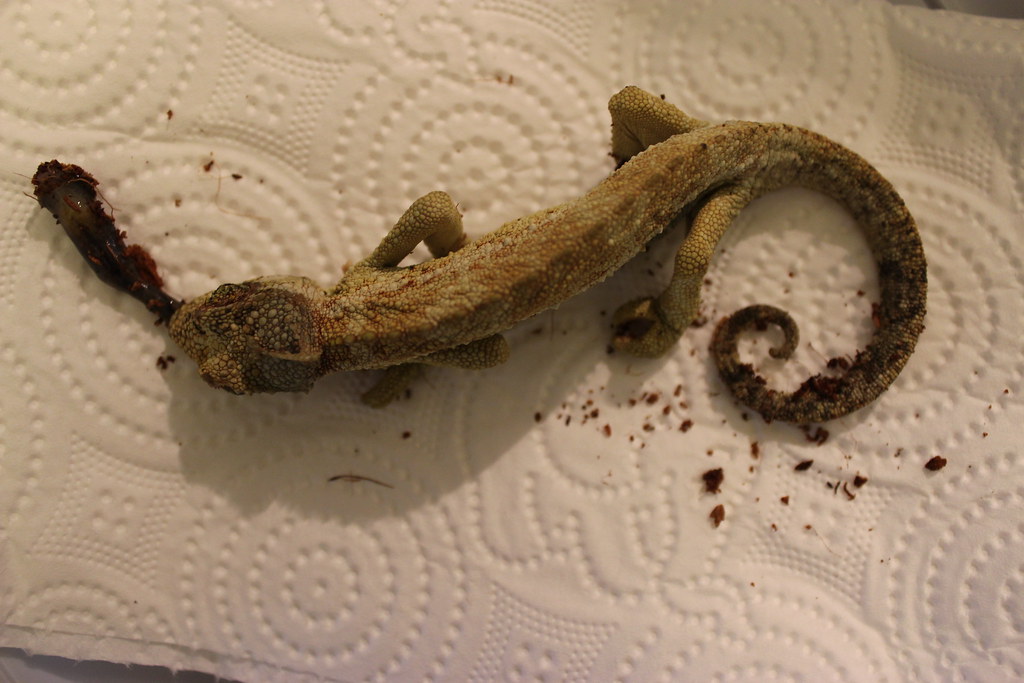
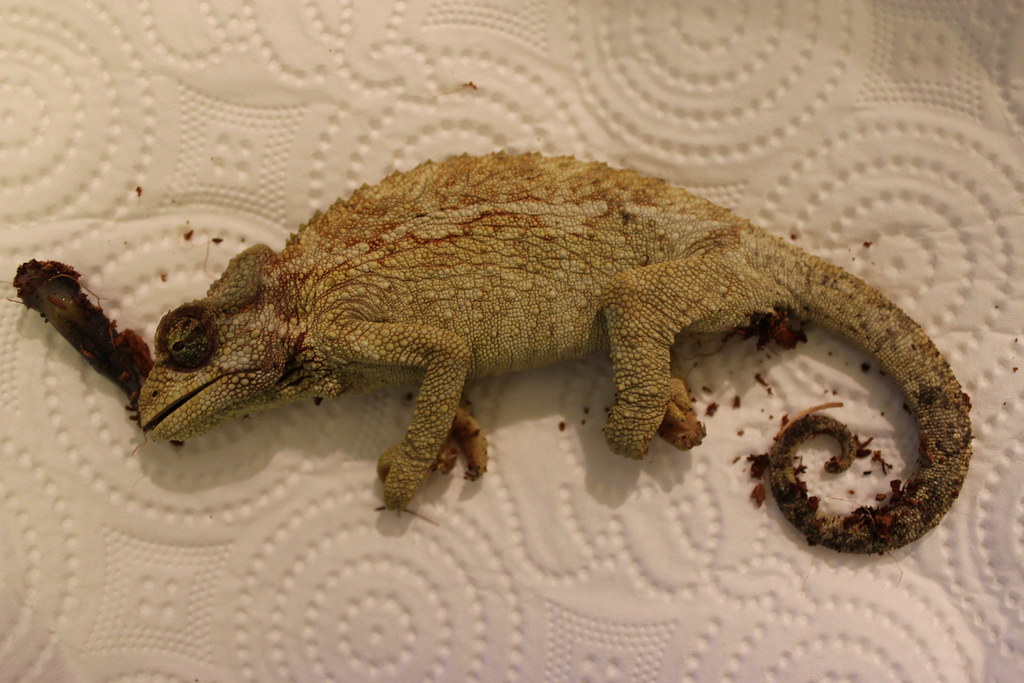
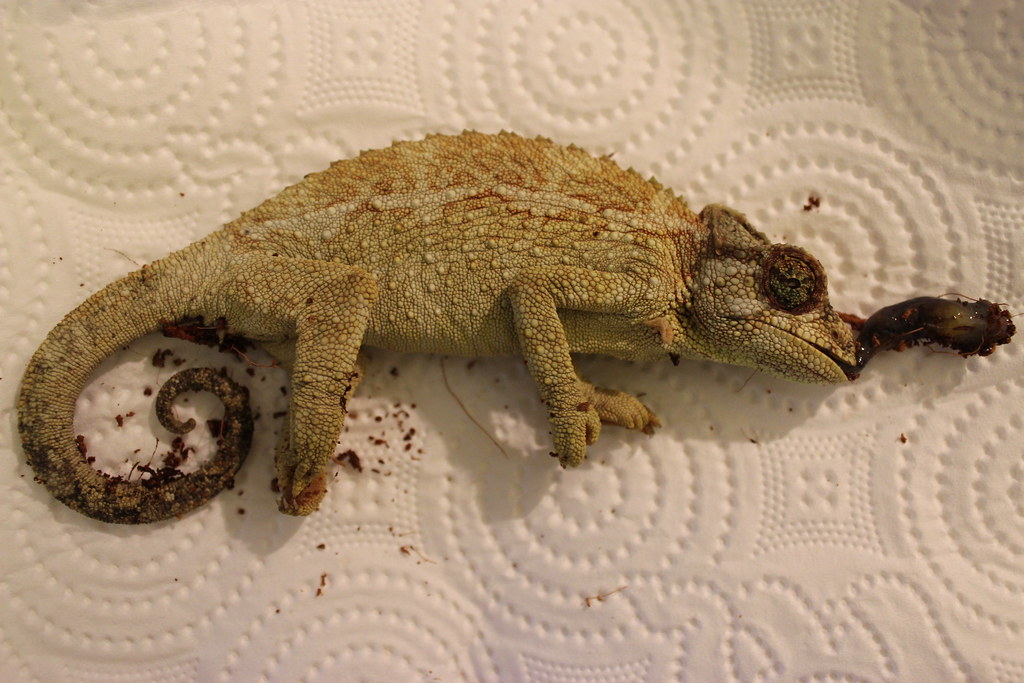
Liver at right side (I did not cut her liver and took better photos of white balls, I wish I did) :
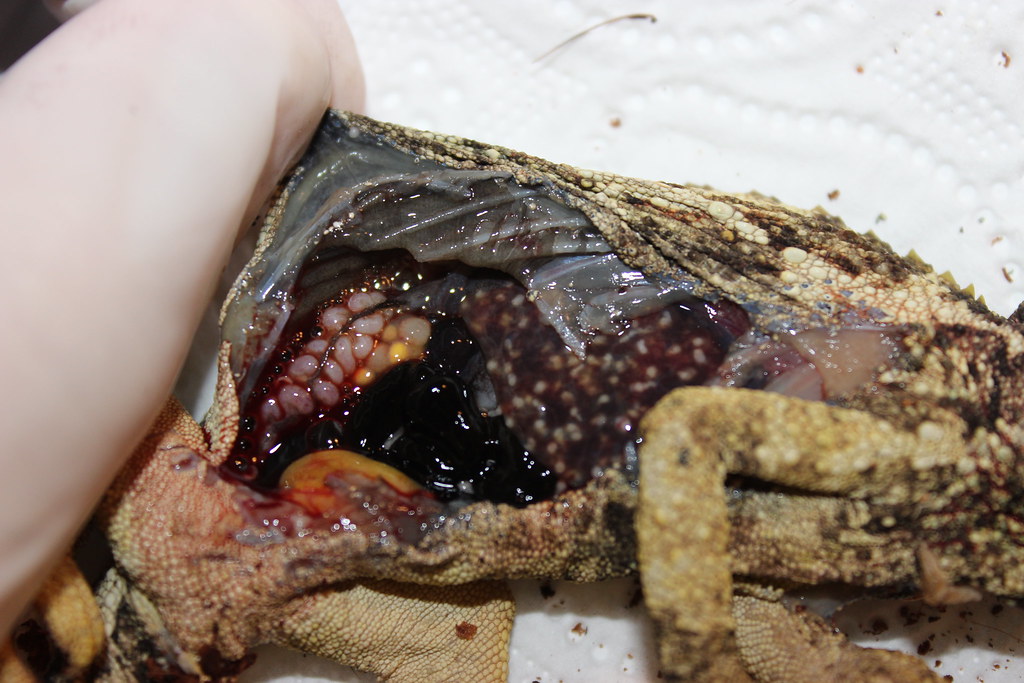
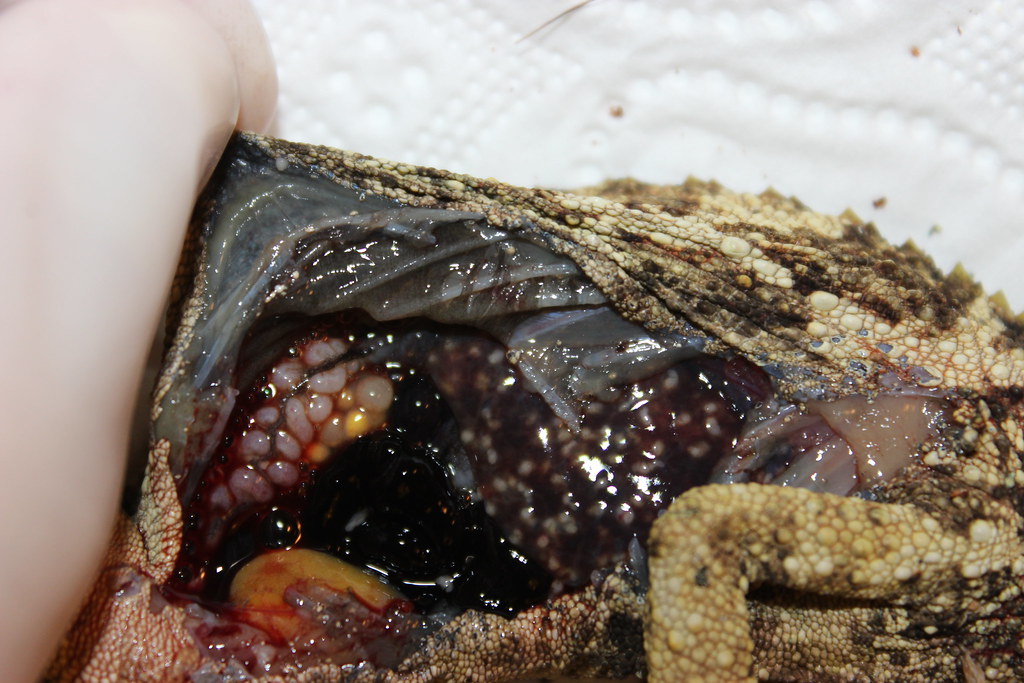
So, what do you say? Is it quiet possible for these balls to be granuloma? Can they be something else? Can the cause of her weird and sudden death be these things?




